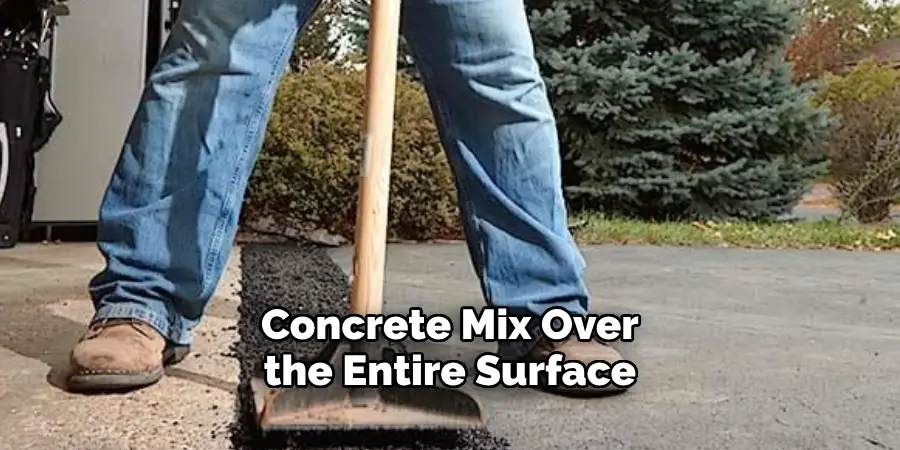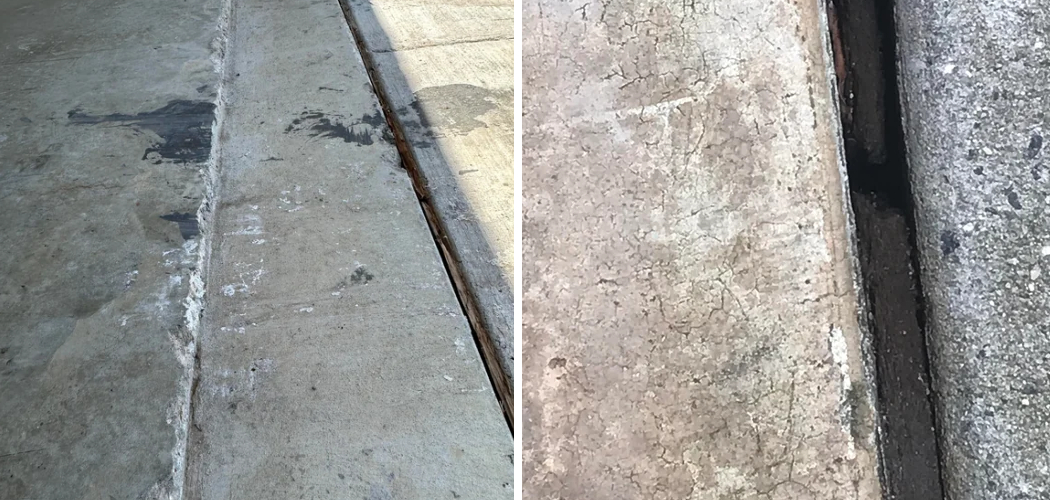Gaps between your garage and the asphalt driveway can be a common nuisance that not only affects your property’s curb appeal but can also lead to structural issues if left unaddressed. These gaps can allow water to seep beneath the asphalt, potentially causing cracks and erosion over time. Fortunately, there are practical solutions to fill these gaps and create a more cohesive and aesthetically pleasing transition between your garage and driveway. In this article, we will explore how to fill gap between garage and asphalt driveway.

From selecting the right materials, such as caulk or specialized sealants, to proper preparation and application techniques, we’ll provide valuable insights and practical tips to help you maintain the integrity of your driveway and enhance its appearance. Whether you’re a DIY enthusiast or considering professional assistance, this guide will empower you to tackle this common issue and protect your property from potential damage.
Importance of Addressing Gaps between the Garage and Driveway
Gaps between the garage and driveway may seem like a small problem, but they can cause a lot of issues if left unaddressed. In this section, we will discuss the importance of filling these gaps and how it can benefit you in the long run.
- Prevent Water Damage: One of the main reasons for filling gaps between the garage and driveway is to prevent water damage. These gaps can act as entry points for water to seep into your garage, causing damage to the structure and any items stored inside. This can lead to costly repairs and replacements in the future.
- Avoid Pest Infestations: Another common problem caused by gaps between the garage and driveway is pest infestations. These small openings provide easy access for insects, rodents and other pests to enter your garage. They can create nests, cause damage and even carry diseases. Filling these gaps can help keep unwanted pests out of your garage.
- Enhance Curb Appeal: Gaps between the garage and driveway not only pose functional problems but also affect the aesthetic appeal of your property. These gaps can make your driveway look unfinished and unkempt. By filling them, you can improve the overall curb appeal of your home.
- Increase Safety: Uneven gaps between the garage and driveway can be a tripping hazard, especially for children or elderly individuals. By filling these gaps, you can ensure a smooth and even surface for walking and prevent any potential accidents or injuries.
- Protect Your Vehicle: A gap between the garage and driveway can also pose a threat to your vehicle. If the gaps are large enough, they can cause damage to your car’s tires or suspension system. By filling these gaps, you can protect your vehicle from unnecessary wear and tear.
10 Methods How to Fill Gap between Garage and Asphalt Driveway
1. Use a Sealant

Using a sealant is one of the best ways to fill the gap between your garage and asphalt driveway. Sealants are designed to provide a waterproof barrier that will help protect the area from water damage and erosion. The sealant should be applied in multiple layers, starting with a layer of primer followed by two layers of sealant. Make sure to give each layer time to dry before applying the next layer.
2. Install a Drainage System
Installing a drainage system is another effective way to fill the gap between your garage and asphalt driveway. The drainage system should be designed to direct water away from the area, preventing it from pooling in the gap and causing further damage. It’s important to make sure that all drains are properly installed and are clear of debris so that they can function effectively.
3. Fill with Gravel or Sand
Filling the gap with gravel or sand is an easy and inexpensive way to fill the gap between your garage and asphalt driveway. Start by removing any debris or weeds from the area, then spread an even layer of gravel or sand over the entire surface. Make sure to tamp down the material so that it’s firmly in place before adding more material as needed until you’ve filled in all gaps completely.
4. Use Asphalt Patching Compound
Asphalt patching compound is specifically designed for filling cracks and holes in asphalt surfaces, making it ideal for filling gaps between your garage and asphalt driveway. To use this method, start by cleaning out any debris or weeds from the area, then apply an even layer of patching compound over the entire surface using a trowel or putty knife. Allow it time to dry before adding more material as needed until you’ve filled in all gaps completely.
5. Use Concrete Mix

Concrete mix is another great option for filling gaps between your garage and asphalt driveway as it provides superior strength compared to other materials such as gravel or sand. To use this method, start by removing any debris or weeds from the area, then spread an even layer of concrete mix over the entire surface using a trowel or putty knife.. Allow it time to dry before adding more material as needed until you’ve filled in all gaps completely
6. Lay Down Cement Board
Cement board is another popular option for filling gaps between garages and asphalt driveways due to its durability and waterproof properties. To use this method, start by laying down the cement board over the entire surface using nails or screws every few inches along its edges for added stability. Make sure that there are no gaps between pieces of cement board before allowing it time to dry completely before applying a sealant over the top if desired for added protection against water damage and erosion.
7. Use Foam Insulation Strips
Foam insulation strips are also great for filling gaps between garages and asphalt driveways due to their ability to expand when wet, which helps them form a tight seal against water damage. To use this method, start by cutting foam insulation strips into small pieces that fit snugly into each gap, then press them firmly into place using a rubber mallet if necessary. Allow them time to expand fully before applying adhesive caulk around their edges for added security against moisture.
8. Apply Self-Adhesive Bitumen Tape
Self-adhesive bitumen tape is specially designed for sealing cracks in asphalt surfaces, making it perfect for filling gaps between garages and asphalt driveways. To use this method, start by cleaning out any debris or weeds from the area, then unroll enough bitumen tape so that it covers all areas where there are gaps. Make sure that there are no bubbles under the tape as these can cause weak spots where water can seep through, then press down firmly on all edges so that they adhere securely onto both surfaces.
9. Lay Down Paving Stones

Laying down paving stones is another great way to fill gaps between garages and asphalt driveways due to its durability and aesthetic appeal. To use this method, start by measuring out exactly how much space needs covering, then lay down paving stones one at a time while leaving enough space between each stone so they fit snugly together when finished. Once laid down, press each stone firmly into place using either mortar mix or polymeric sand, depending on preference.
10. Install Expansion Joints
Installing expansion joints is also an effective way of filling gaps between garages and asphalt driveways, as they help absorb movement caused by temperature fluctuations which prevents cracks from forming over time. To use this method, start by measuring exactly how much space needs covering, then install the expansion joints by following manufacturer instructions. It’s important to make sure that they are installed securely and that there are no gaps between each joint for maximum effectiveness.
Things to Consider when Filling the Gap between Garage and Asphalt Driveway
When it comes to filling gaps between a garage and an asphalt driveway, there are several things that you should consider. While this may seem like a simple task, improper filling or neglecting to fill the gap can result in more serious problems down the road.
Here are some important factors to keep in mind when filling the gap between your garage and asphalt driveway:
The size of the gap
The first thing to consider is the size of the gap that needs to be filled. Is it a small, hairline crack or a wider gap? This will determine what type of filler material you will need and how much of it.
The location of the gap
The location of the gap is also important to consider. Is it in a high traffic area or a low traffic area? Will it be exposed to harsh weather conditions? This will dictate the type of filler material and sealant that you should use.
The climate

Speaking of weather conditions, another important factor to consider is the climate of your area. If you live in an area with extreme temperature fluctuations, you will need a filler material that can withstand these changes without cracking or breaking.
Conclusion
The task of filling the gap between the garage and your asphalt driveway may seem daunting, but it does not have to be. Through careful preparation, thoughtful planning, and the use of high-quality materials, you can make the process relatively easy and straightforward.
By following these simple steps, you can ensure that your garage-to-driveway transition is smooth and protective. So don’t be intimidated; with a little bit of know-how and some hard work, you’ll be able to connect your driveway to your garage with confidence. Don’t wait any longer – get started today on how to fill gap between garage and asphalt driveway!

